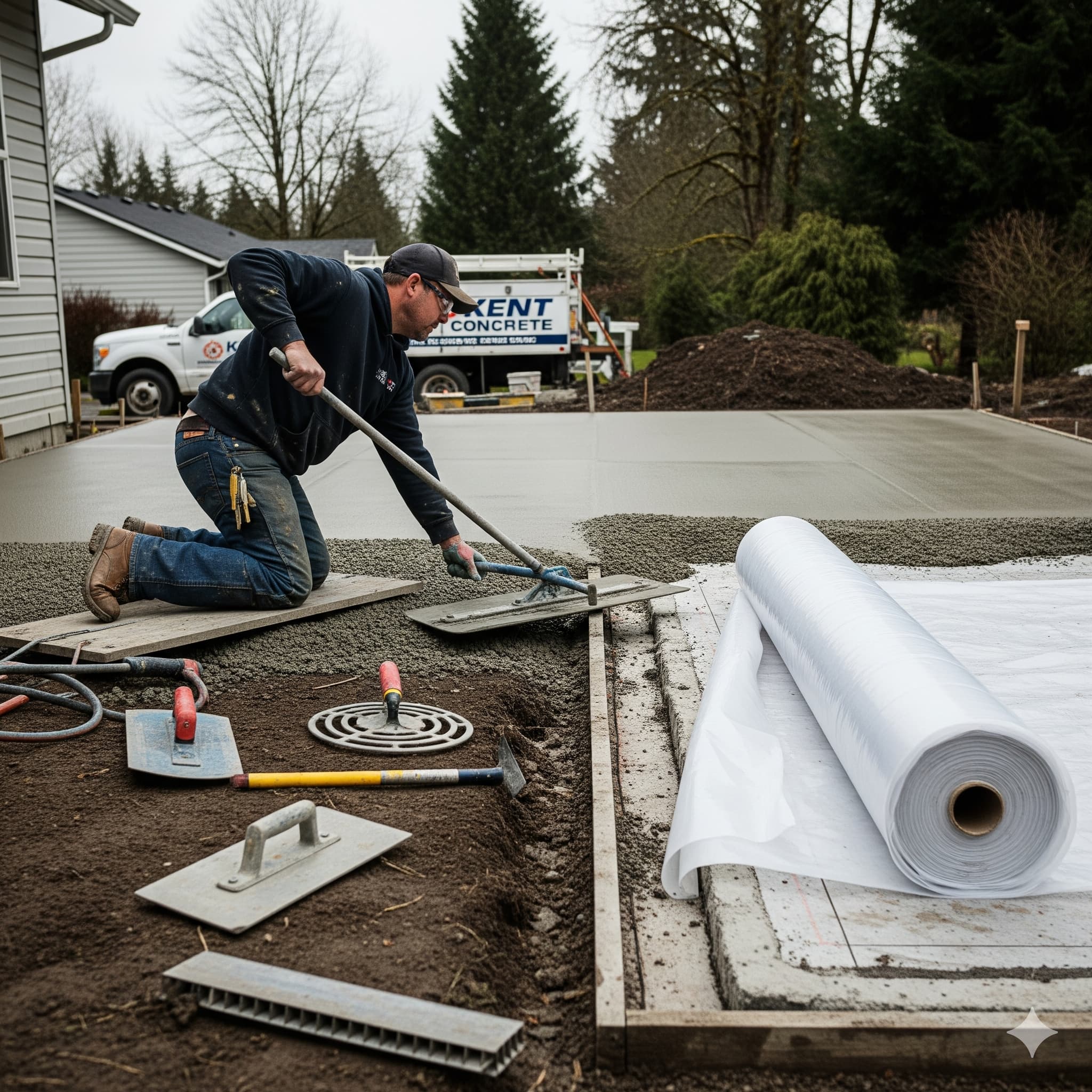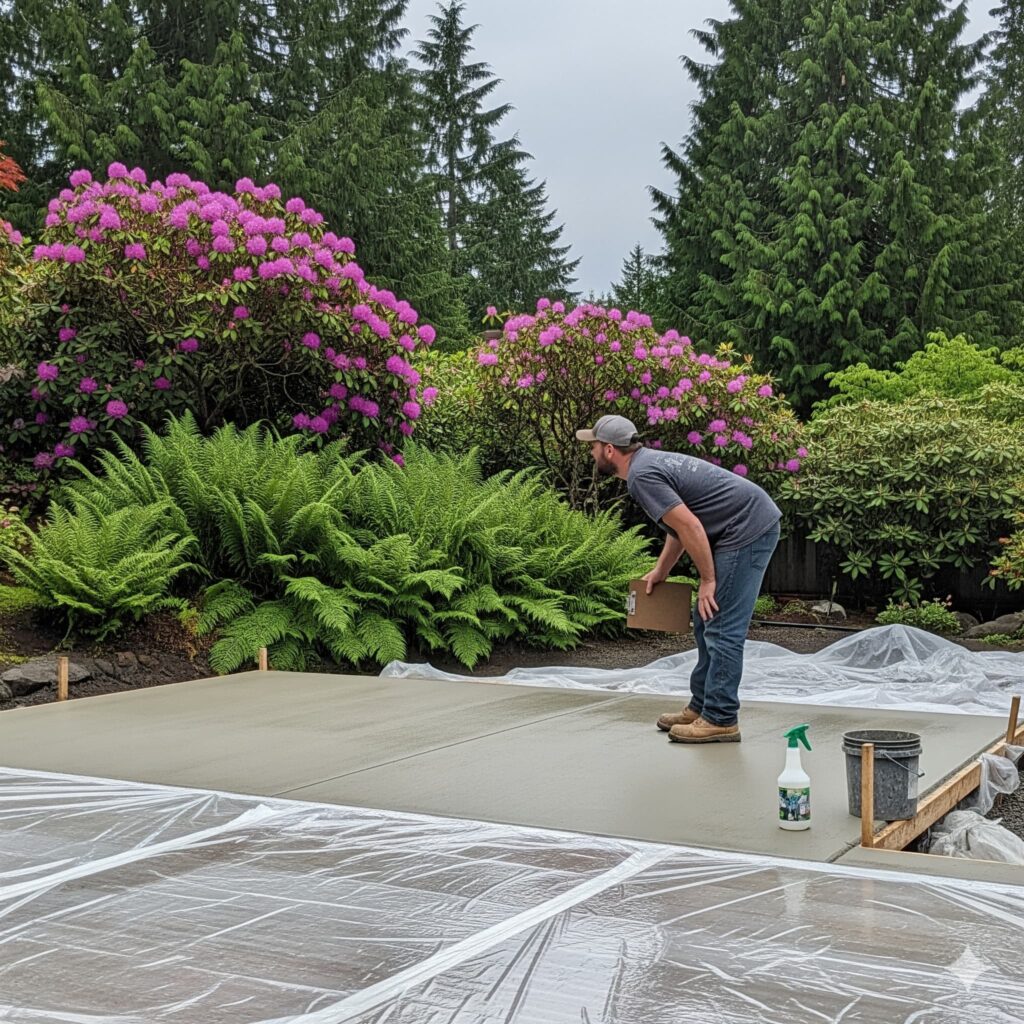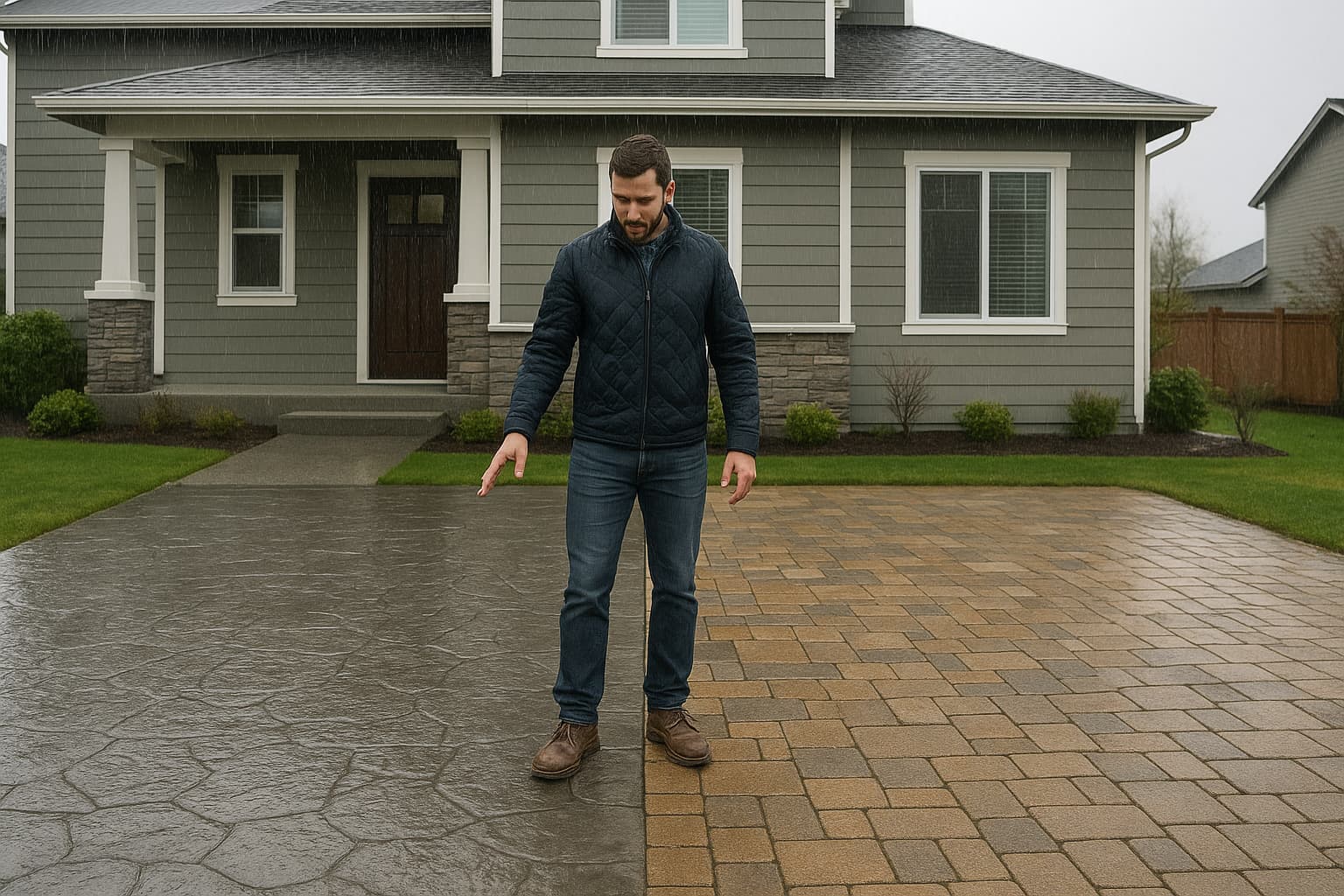
Kent Home Guide: Concrete Slab Curing Time
Understanding concrete slab curing times becomes crucial for Kent homeowners planning construction projects or repairs. Pacific Northwest climate conditions significantly affect curing schedules, making local knowledge essential for achieving optimal strength and durability in your concrete installations.

The Science Behind Concrete Curing
Concrete curing involves a chemical process called hydration, where cement particles react with water to form strong crystalline bonds. This process continues for months, but reaches critical milestones at specific intervals that determine when you can safely load or use your concrete slab.
Temperature and humidity directly influence curing rates, making Kent’s marine climate both advantageous and challenging for concrete work. The region’s moderate temperatures support steady curing, while high humidity levels can extend surface drying times and affect finishing procedures.
Understanding the difference between the initial set, the final set, and full cure helps homeowners plan project timelines and coordinate subsequent construction activities. Each stage represents different strength levels and capabilities for your concrete slab.
Modern concrete mixes include admixtures that modify curing characteristics, particularly important in Kent’s wet climate. These additives can accelerate or retard setting times while improving long-term durability against moisture exposure and freeze-thaw cycles.
Initial Setting Timeframes
The initial set typically occurs within 30 to 60 minutes under normal Kent weather conditions. During this phase, the concrete loses its plasticity and becomes firm enough to hold its shape, but remains vulnerable to surface damage from rain or foot traffic.
Temperature variations affect initial set timing significantly. Cool spring or fall weather common in Kent can extend the initial set to 90 minutes or longer, while warm summer conditions may reduce this timeframe to 20 to 30 minutes.
Wind conditions prevalent near areas like Boeing Field or the Green River can accelerate surface moisture loss, potentially causing rapid setting that complicates finishing operations. Professional contractors monitor these conditions and adjust procedures accordingly.
Humidity levels above 80 percent, common during Kent’s wet seasons, can slow initial set while creating ideal conditions for extended working time during concrete placement and finishing operations.
Final Set and Early Strength Development
Final set occurs 4 to 8 hours after placement under typical Kent conditions. At this stage, your concrete slab can support light foot traffic for inspection purposes but remains too weak for construction loads or equipment.
The first 24 hours prove critical for strength development, with properly cured concrete reaching approximately 25 percent of its ultimate strength. This milestone allows the removal of most forming materials and light construction activity around the slab perimeter.
Week-one strength development continues rapidly, reaching 65 to 70 percent of ultimate strength under proper curing conditions. This level supports most residential construction activities but may require protection from heavy equipment or concentrated loads.
Kent’s climate generally supports excellent early strength development due to moderate temperatures and adequate moisture. However, rapid weather changes require careful monitoring and potential protection measures during this critical period.
Full Cure Timeline Considerations
Standard concrete reaches approximately 90 percent of its ultimate strength within 28 days under proper curing conditions. This industry standard provides the baseline for most structural calculations and load-bearing requirements in residential construction.
Complete hydration and maximum strength development continue for months or even years, though practical construction timelines typically use 28-day strength values for design purposes. Your concrete slab continues gaining strength well beyond this timeframe.
Kent’s wet climate can actually benefit long-term curing by providing sustained moisture that supports continued hydration. However, surface protection remains important to prevent damage during the vulnerable early curing period.
Seasonal timing affects long-term curing success. Projects completed during Kent’s dry summer months require more active moisture retention, while winter installations benefit from natural humidity but need freeze protection.
Weather Impact on Curing
Temperature extremes significantly affect curing rates and final strength development. Kent’s moderate climate generally avoids the temperature extremes that create major curing challenges, but occasional hot or cold periods require special attention.
Freezing temperatures during the first 24 to 48 hours can permanently damage the concrete structure. Kent’s occasional winter freezes, particularly in elevated areas near Covington or around Lake Meridian, require protection measures during vulnerable curing periods.
Excessive heat accelerates early strength gain but can compromise long-term durability if moisture loss occurs too rapidly. Kent’s summer temperatures rarely create these conditions, but direct sun exposure on large slabs may require protection measures.
Rain during early curing stages can damage surface finish and potentially weaken the concrete structure. Kent’s frequent precipitation makes protective measures essential for maintaining quality results during wet-season construction.
Optimizing Curing Conditions
Moisture retention proves crucial for achieving maximum concrete strength and durability. In Kent’s climate, this often means protecting against moisture loss during dry periods rather than preventing excess moisture infiltration.
Temperature control helps maintain optimal curing rates. Insulation blankets or heated enclosures may benefit winter projects, while shade structures or cooling methods support summer installations during rare heat waves.
Curing compounds applied immediately after finishing help retain moisture while allowing surface hardening. These products prove particularly valuable in Kent’s variable weather conditions, where natural moisture levels fluctuate significantly.
Professional contractors use various curing methods, including plastic sheeting, wet burlap, or sprinkler systems, to maintain optimal moisture levels. The choice depends on project size, weather conditions, and accessibility for ongoing maintenance.
Timeline Planning for Kent Projects
Plan concrete pours during stable weather periods when possible. Kent’s most predictable conditions typically occur during late spring through early fall, providing optimal curing environments for most residential projects.
Allow adequate time buffers for weather delays and extended curing periods. Kent’s changeable weather can extend project timelines, particularly during transitions between wet and dry seasons.
Coordinate subsequent construction activities with curing milestones. Understanding when your concrete slab can safely support different loads helps optimize overall project scheduling and prevents costly delays or damage.
Consider seasonal workforce availability when planning concrete projects. Kent’s construction industry experiences peak demand during dry weather windows, potentially affecting contractor availability and project timing.
Special Considerations for Kent Properties
Soil conditions throughout Kent affect concrete placement and curing requirements. Clay-rich soils common near areas like Mill Creek require additional base preparation and drainage considerations that influence curing procedures.
Proximity to water features like Soos Creek or the Green River creates localized humidity conditions that affect curing rates. Properties in these areas may experience extended surface drying times, requiring modified curing approaches.
Elevation differences across Kent create varying microclimates that influence concrete curing. Properties on East Hill experience different conditions than valley floor locations, requiring tailored curing strategies for optimal results.
Wind exposure from prevailing weather patterns affects moisture retention during curing. Properties near open areas or elevated locations may need additional protection measures to maintain proper curing conditions.
Quality Control and Testing
Professional contractors monitor curing progress through various testing methods, including temperature monitoring, moisture meters, and strength testing, when critical timing matters for project scheduling.
Visual inspection provides valuable information about curing progress and potential problems. Proper color development, absence of surface crazing, and uniform appearance indicate successful curing progression.
Documentation of curing conditions helps troubleshoot any performance issues and provides valuable information for future maintenance planning. Weather records, temperature logs, and moisture readings create useful project histories.
Professional oversight ensures that curing procedures follow industry best practices and local code requirements. Kent Concrete Masters provides expertise in optimizing curing procedures for local climate conditions and project-specific requirements.
Common Curing Mistakes to Avoid
Premature loading represents the most common cause of concrete slab damage during curing. Understanding appropriate timelines for different activities prevents costly repairs and ensures long-term performance.
Inadequate moisture protection during hot or windy conditions can compromise strength development and surface quality. Even Kent’s moderate climate occasionally creates conditions requiring active moisture retention measures.
Insufficient freeze protection during winter projects can cause permanent damage requiring extensive repairs or replacement. Understanding local freeze risk and implementing appropriate protection measures prevents these costly problems.
Poor timing coordination between curing requirements and construction schedules creates project delays and potential quality issues. Proper planning integrates curing timelines with overall project requirements.
Your concrete slab curing success in Kent depends on understanding local climate conditions, proper planning, and appropriate protection measures. Working with experienced contractors ensures optimal curing procedures that deliver maximum strength, durability, and long-term performance for your investment.



